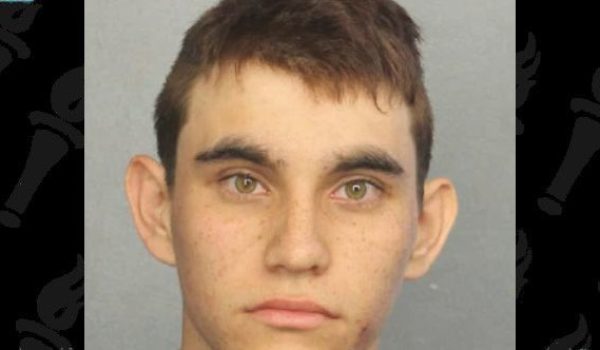
If you want to know why there has been a manufactured drumbeat of innuendo and rumor about Interior Secretary Ryan Zinke over the last several weeks, a good place to start is with the change in policy on his watch regarding immigration and security enforcement in Interior-administered borderlands.
There has been almost no media coverage of this development. However, the Washington Examiner carried a brief article by John Siciliano on the topic on Friday, 9 November. The article contained an eye-opening nugget:
[A] new Interior report show[ed] the department’s law enforcement arm recently increased arrests of illegal immigrants by almost 4,000 percent.
Read a little bit further, and sure enough, it turns out the report refers to enforcement in the extensive federally-administered public lands along the U.S. border, mostly in New Mexico and Arizona.
Will this presidential election be the most important in American history?
“The fact that we were able to increase arrests by almost 4,000 percent is undeniable proof that there’s a big problem,” Zinke added. “Under the previous administration, Interior’s borderlands were basically an open door for illegal activity; and, what few law enforcement officers were down there were left unprotected and without the resources and backup needed to keep communities and themselves safe.”
There is no doubt that this is true. I wrote about it in April 2015, back when Judicial Watch was tracking information on an ISIS training camp located directly adjacent to the southern border of New Mexico (literally, a few hundred yards from it).
Judicial Watch’s concern was primarily with the camp’s proximity to El Paso, Texas, a major urban center and location of key military bases. That concern was quite valid, but there was also plenty of evidence that the camp was situated where it was because jihadis were exploiting the poor border enforcement in the area – the result of Interior’s agencies withholding cooperation from the Border Patrol.
In fact, a “known wolf” jihadi cell whose activities had ranged as far as Chicago was connected to a tiny town in southeast New Mexico – Anthony – whose main attraction was that access to it would be convenient if facilitated through the nearby, designated “wilderness” lands administered by the Department of the Interior.
The Judicial Watch report from this week mentioned one of the wilderness areas the Islamic State jihadis are exploiting: the Potrillo Mountains, northwest of Anapra. ISIS infiltrators are using the harsh, volcanic terrain of the Potrillo Mountains to place spotters.
A look at Maps 4 and 5 shows that the mountains flanking the path of illegal entry through southern New Mexico are basically all designated wilderness area. Having this much wilderness area so close to the border is also unusual, as the map of the Western states demonstrates. A very unusual amount of the New Mexico border with Mexico is administered by the Bureau of Land Management, and an unusually large subset of that territory is designated wilderness, meaning access is very limited for motorized vehicles.
[Note: all my maps from the 2015 article were lost in an image database purge at LU earlier this year, and are now irrecoverable. My apologies for that.]
Sensible Americans might assume that prohibitions on motor vehicle access apply mainly to non-essential civilian traffic. The Border Patrol, performing an important national security function, would surely have access, right?
Indeed, in the previous decade, as discussed in the 2015 article, a memorandum of understanding between federal departments had laid out a basis for cooperation by which the Border Patrol was supposed to be able to get timely access when necessary to pursue border crashers who were exploiting federal lands for their enterprises.
But the Obama administration leveraged every seam and ambiguity in that MOU to stonewall CBP access requests. As Ryan Zinke says, the 4,000% increase in arrests under the new administration demonstrates how completely absent and ineffective policing was on federal borderlands under Obama.
The Border Patrol union and the border county sheriffs complained about that problem at the time. The national media rarely if ever covered it, and their local affiliates tended to be silent as well. Most contemporary reports were from new media, or buried in government documents. Congress was aware of it, and the House held hearings on it after Republicans gained the majority. But it wasn’t possible to pressure the Obama administration to close off federal lands as an open gate to U.S. territory.
There’s an additional note of some interest. In 2017, a GAO report on a project funded in 2006 to repair and update border fencing disclosed numerous instances of the border fences being cut or otherwise breached between 2010 and 2015. An especially notable area where this occurred was immediately adjacent to the location of the ISIS camp in Mexico, just across from the New Mexico town of Sunland. This was the spot where ISIS and other jihadis could most readily cross into the U.S. and leverage the poorly policed federal lands to make their way northward through southeast New Mexico.
Terence P. Jeffrey cited the report in his piece at CNSNews (my emphasis added; except from link above):
The report describes how the Border Patrol on the ground in the El Paso Sector tried for seven years to get DHS to approve replacing the “compromised” fencing in Sunland Park, New Mexico—which is right across the state line from El Paso, Texas.
Because the fence in Sunland was not replaced, illegal entrants deterred from crossing in El Paso–where there was a good border fence–could simply move to the West to Sunland and cross there.
“In addition, sector officials stated that modern pedestrian fencing in downtown El Paso, Texas, had diverted illegal entrant activity to Sunland Park, New Mexico, where the primary legacy pedestrian fencing is compromised,” says the GAO report.
Funding to replace this section of fence, under the 2006 legislation, was finally approved in 2015. Work started in 2016, but was still ongoing in March 2017, when the GAO report was published.
So the Obama administration wouldn’t let the Border Patrol operate on federal lands, didn’t use the Interior Department’s own law enforcement arm to cooperate on border security, and dragged its heels on replacing the severely compromised section of fence that offered ISIS a direct path from their camp to the untended borderlands of southern New Mexico and points north.
Trump and Ryan Zinke have reversed that policy. According to Zinke, the Interior law enforcement unit will also deploy a good portion of its 4,000 personnel to support the surge at the border as the approaching migrant caravans near.
Siciliano at Washington Examiner:
“We will increase our presence on the border in targeted regions and provide additional assistance to teams deploying in response to the oncoming caravan,” Zinke said in a statement.
The structure of this effort comes from an initiative launched in May 2018:
Zinke’s Border Support Surge Initiative[,] launched in May, … sought to level Interior’s federal reach with local law enforcement and U.S. Border Patrol agents to “patrol and protect the border with Mexico.”
What this means is not that Interior will be supplementing CBP or the military in the areas under CBP’s patrol jurisdiction. It means that Interior won’t let the borderland wilderness areas under its supervision be exploitable for unauthorized border crossers, as they have been for too many years.
It’s no wonder the activist left is trying to take Zinke down with a smear-and-innuendo campaign in the media. His department is making an actual difference with a reversal of the previous administration’s policies. And closing off federal lands to use by illegal border-crossers – including the wilderness and monument areas in California and Texas – will mean that criminal, cartel, and terrorist infiltrators trying to use the caravan crowds for cover find a dragnet instead of the open country they’ve come to expect.




